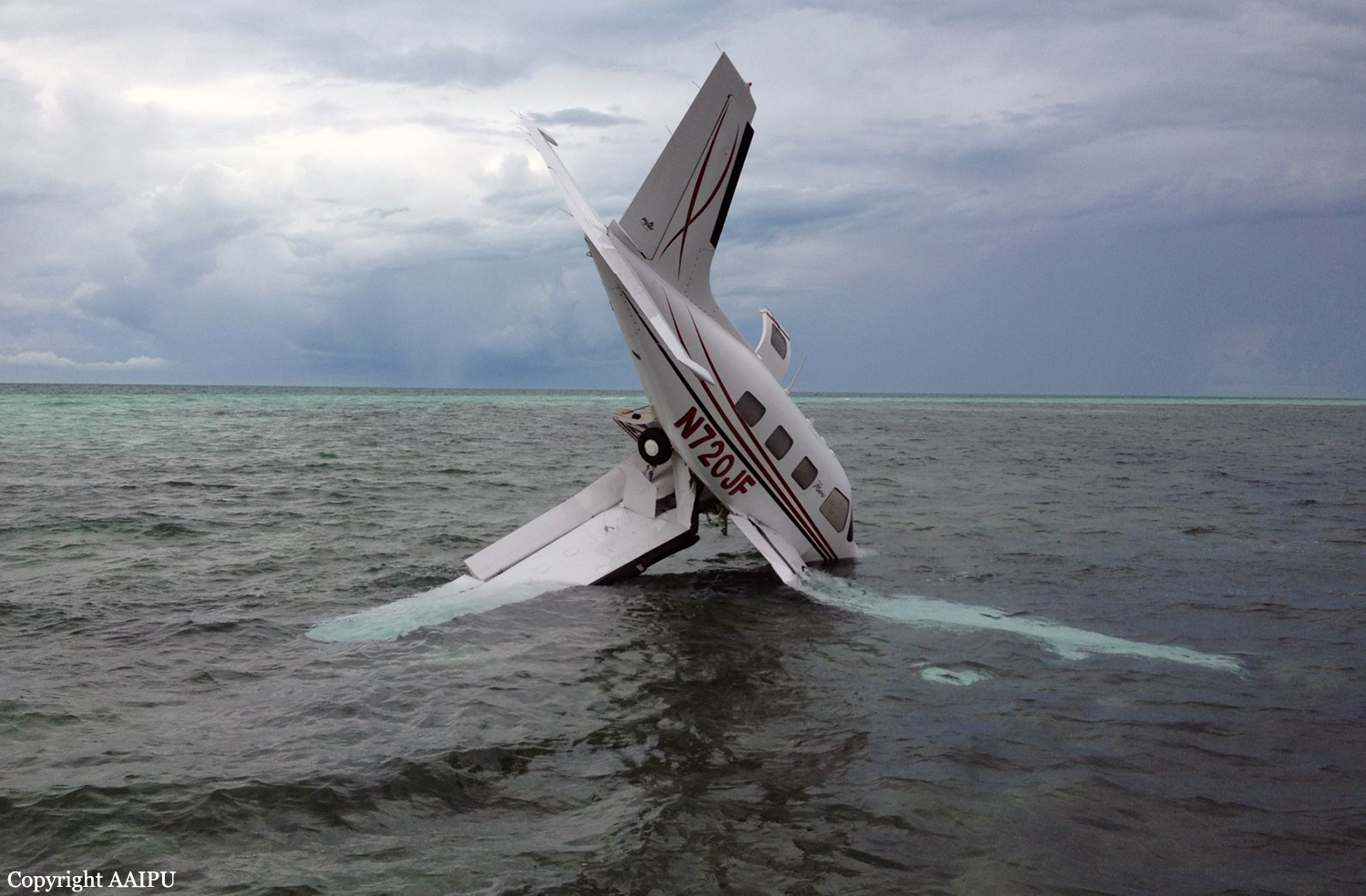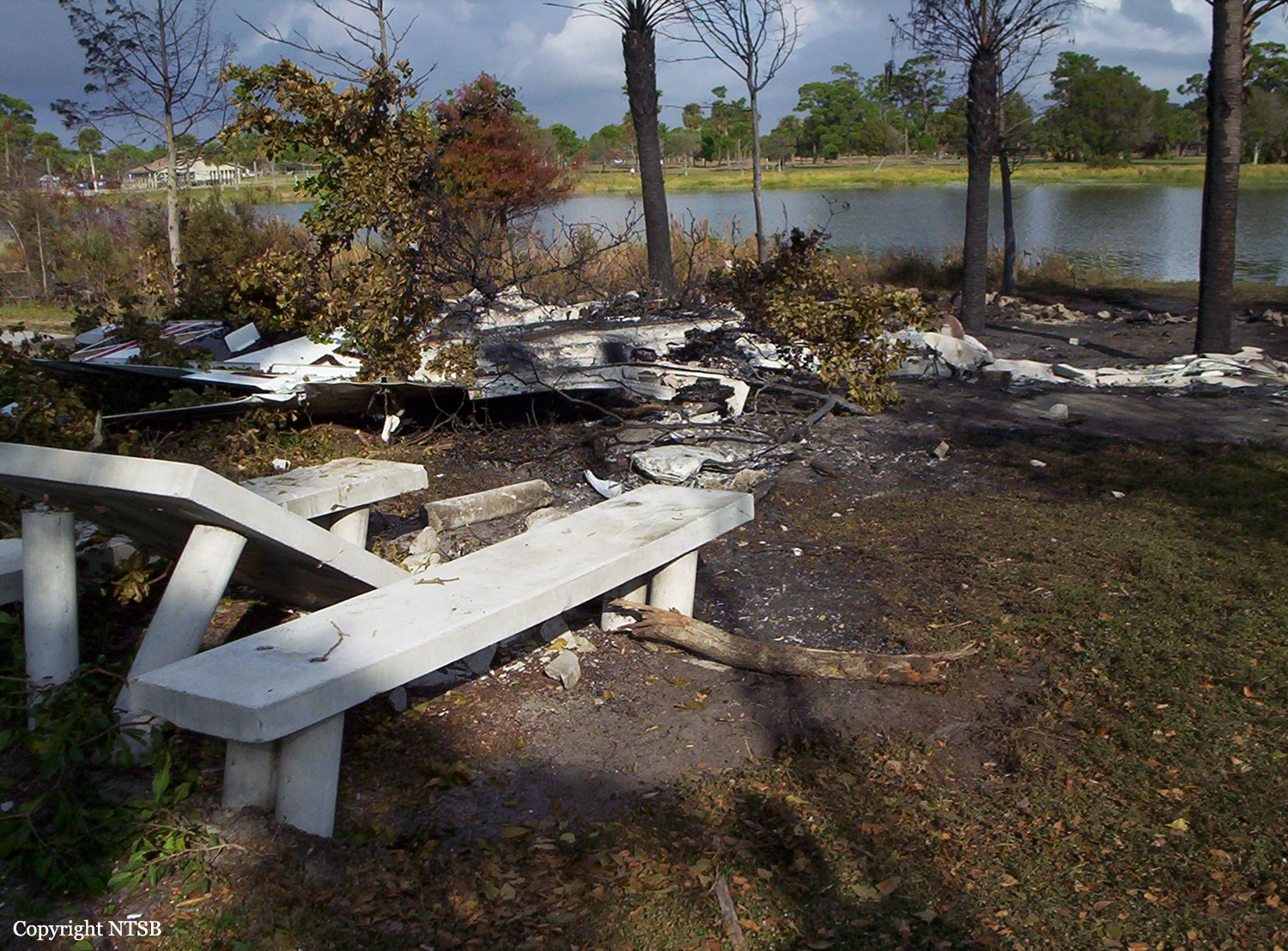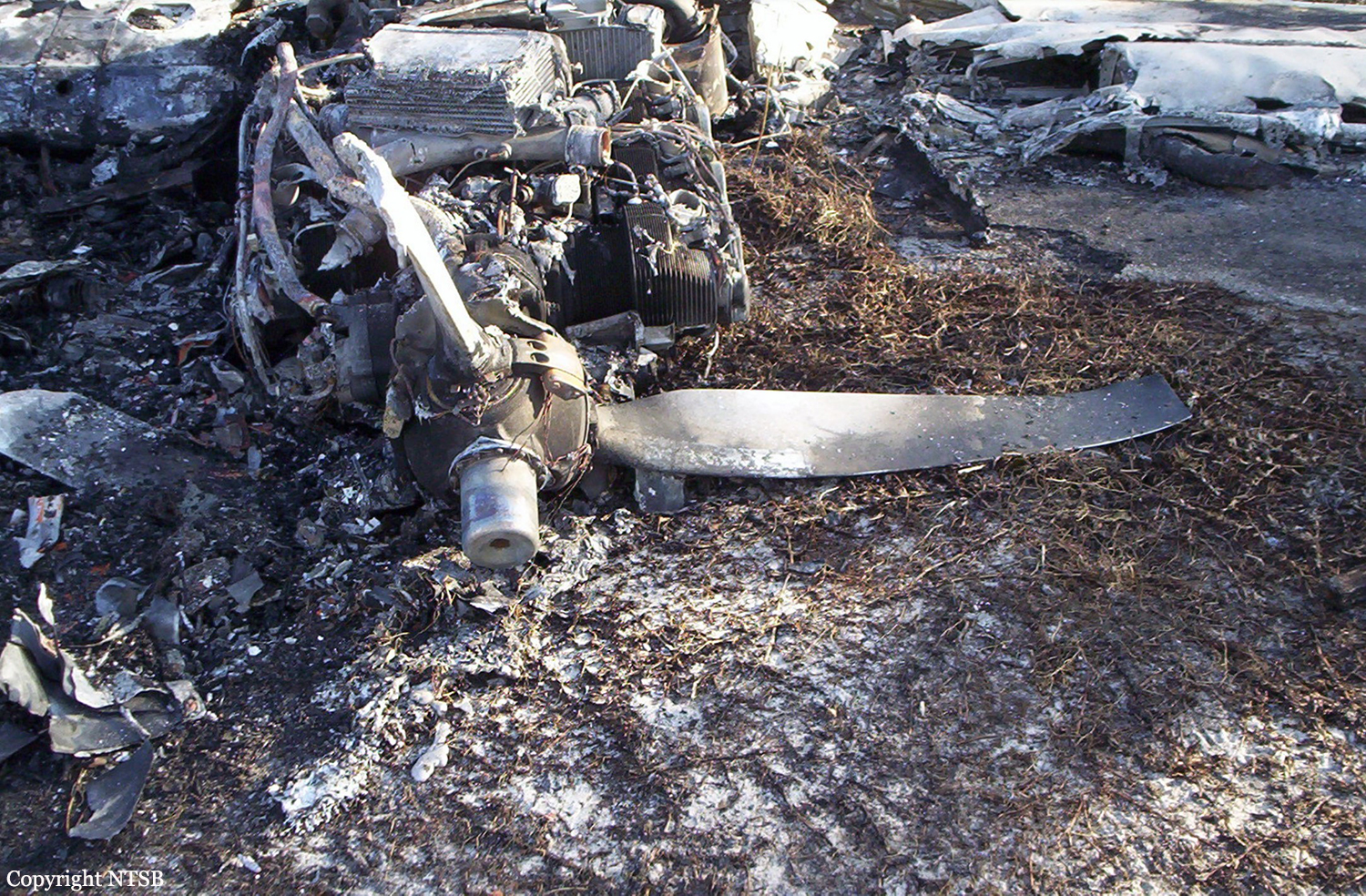Zone
Crash of a Piper PA-46R-350T Matrix off Cat Cay
Date & Time:
Aug 25, 2013 at 1406 LT
Registration:
N720JF
Survivors:
Yes
Schedule:
Cat Cay - Kendall-Miami
MSN:
46-92004
YOM:
2008
Crew on board:
1
Crew fatalities:
Pax on board:
4
Pax fatalities:
Other fatalities:
Total fatalities:
0
Captain / Total hours on type:
210.00
Aircraft flight hours:
1000
Circumstances:
According to the pilot, he applied full power, set the flaps at 10 degrees, released the brakes, and, after reaching 80 knots, he rotated the airplane. The pilot further reported that the engine subsequently lost total power when the airplane was about 150 ft above ground level. The airplane then impacted water in a nose-down, right-wing-low attitude about 300 ft from the end of the runway. The pilot reported that he thought that the runway was 1,900 ft long; however, it was only 1,300 ft long. Review of the takeoff ground roll distance charts contained in the Pilot’s Operating Handbook (POH) revealed that, with flap settings of 0 and 20 degrees, the ground roll would have been 1,700 and 1,150 ft, respectively. Takeoff ground roll distances were not provided for use of 10 degrees of flaps; however, the POH stated that 10 degrees of flaps could be used. Although the distance was not specified, it is likely that the airplane would have required more than 1,300 ft for takeoff with 10 degrees of flaps. Examination of the engine revealed saltwater corrosion throughout it; however, this was likely due to the airplane’s submersion in water after the accident. No other mechanical malfunctions or abnormalities were noted. Examination of data extracted from the multifunction display (MFD) and primary flight display (PFD) revealed that the engine parameters were performing in the normal operating range until the end of the recordings. The data also indicated that, 7 seconds before the end of the recordings, the airplane pitched up from 0 to about 17 degrees and then rolled 17 degrees left wing down while continuing to pitch up to 20 degrees. The airplane then rolled 77 degrees right wing down and pitched down about 50 degrees. The highest airspeed recorded by the MFD and PFD was about 70 knots, which occurred about 1 second before the end of the recordings. The POH stated that, depending on the landing gear position, flap setting, and bank angle, the stall speed for the airplane would be between 65 and 71 knots. Based on the evidence, it is likely that the engine did not lose power as reported by the pilot. As the airplane approached the end of the runway and the pilot realized that it was not long enough for his planned takeoff, he attempted to lift off at an insufficient airspeed and at too high of a pitch angle, which resulted in an aerodynamic stall at a low altitude. If the pilot had known the actual runway length, he might have used a flap setting of 20 degrees, which would have provided sufficient distance for the takeoff.
Probable cause:
The pilot’s attempt to rotate the airplane before obtaining sufficient airspeed and his improper pitch control during takeoff, which resulted in the airplane exceeding its critical angle-of-attack and subsequently experiencing an aerodynamic stall at a low altitude. Contributing to the accident was the pilot’s lack of awareness of the length of the runway, which led to his attempting to take off with the airplane improperly configured.
Final Report:



Crash of a Cessna 421C Golden Eagle III in Palm Beach County: 1 killed
Date & Time:
Dec 8, 2012 at 1334 LT
Registration:
N297DB
Survivors:
No
Schedule:
Palm Beach County - Kendall
MSN:
421C-0826
YOM:
1980
Crew on board:
1
Crew fatalities:
Pax on board:
0
Pax fatalities:
Other fatalities:
Total fatalities:
1
Captain / Total hours on type:
100.00
Aircraft flight hours:
7040
Circumstances:
On December 8, 2012, at 1334 eastern standard time, a Cessna 421C, N297DB, operated by a private individual, was destroyed when it collided with trees and terrain following a loss of control after takeoff from North Palm Beach County Airpark (LNA), Lantana, Florida. The commercial pilot was fatally injured. Visual meteorological conditions prevailed, and no flight plan was filed for the personal flight, which was conducted under the provisions of Title 14 Code of Federal Regulations Part 91. The pilot took delivery of the airplane from a maintenance facility that had just completed an annual inspection and repainting of the airplane. According to the owner of the facility, who was a certificated pilot and an airframe and powerplant mechanic, the pilot completed the preflight inspection and the airplane was towed outside. The pilot started the airplane, but then shutdown to resolve an alternator charging light. Afterwards, the pilot stated that he planned to fly to Okeechobee, Florida, complete a few landings, and then continue to Miami. According to the mechanic, the pilot performed a ground run of the airplane for several minutes before taxiing to the approach end of Runway 3 for takeoff. The airplane lifted off about halfway down the runway and climbed at a "normal" rate. The mechanic then observed the airplane suddenly yaw to the left "for a second or two" and the airplane's nose continued to pitch up before rolling left and descending vertically, nose-down, until it disappeared from view. Several witnesses provided similar accounts to a Federal Aviation Administration (FAA) inspector and the local sheriff's department. One witness, a certificated flight instructor said, "The airplane just kept pitching up, and then it looked like a VMC roll."
Probable cause:
The pilot's failure to follow established engine-out procedures and to maintain a proper airspeed after the total loss of engine power on one of the airplane’s two engines during the initial climb. Contributing to the accident was the total loss of engine power due to a loss of torque on the crankcase bolts for reasons that could not be determined because of impact- and fire-related damage to the engine.
Final Report:





Crash of a Piper PA-31-310 Navajo in Kendall: 1 killed
Date & Time:
Jul 17, 1998 at 1431 LT
Registration:
N7578L
Survivors:
No
Schedule:
Kendall - Kendall
MSN:
31-7401201
YOM:
1974
Crew on board:
1
Crew fatalities:
Pax on board:
0
Pax fatalities:
Other fatalities:
Total fatalities:
1
Circumstances:
An aircraft mechanic working abeam of the point on the runway that the airplane lifted off was attracted by the sound of engine roughness, and observed black smoke trailing from the left engine. The airplane continued to climb to about 150 feet above ground level, entered a series of shallow left turns at about the airport's east boundary at a slow speed, and then entered a rapid left roll and pitched down. The pilot transmitted an unreadable call on FAA tower frequency, but the words, 'we got a..' and 'engine' were clearly discernable. The airplane crashed in dense brush about 1.25 miles northeast of the airport. Contamination was found in the left engine fuel system. Post crash testing of the left fuel servo revealed it would not sustain a steady state fuel flow above about one half throttle due to contamination.
Probable cause:
The pilot's inadequate preflight inspection which led to fuel contamination and subsequent loss of engine power. Also causal was the pilot's failure to maintain single engine flying speed (VMC).
Final Report:
Crash of a Beechcraft 65 Queen Air in the Atlantic Ocean
Date & Time:
Jul 24, 1997 at 1620 LT
Registration:
N816Q
Survivors:
Yes
Schedule:
Kendall-Tamiami – Kingston
MSN:
LC-38
YOM:
1960
Crew on board:
2
Crew fatalities:
Pax on board:
3
Pax fatalities:
Other fatalities:
Total fatalities:
0
Captain / Total hours on type:
21.00
Aircraft flight hours:
4300
Circumstances:
About 1 hour after departure and 15 minutes after reaching the cruising altitude of 9,000 feet, the left engine quit. The flight crew feathered the left propeller and turned toward the closest
airport which was 80 miles away. The aircraft would not maintain altitude and entered a 500 foot per minute descent. About 20 minutes after engine failure the aircraft was ditched in the ocean about 50 miles from the closest airport. The flight crew and passengers were rescued the following morning and the aircraft was not recovered. The second pilot and owner of the aircraft stated the aircraft was about 90 pounds over the maximum allowable weight at the time of departure. The previous owner of the aircraft stated that both engines had exceeded the recommended overhaul time by about 450 flight hours.
airport which was 80 miles away. The aircraft would not maintain altitude and entered a 500 foot per minute descent. About 20 minutes after engine failure the aircraft was ditched in the ocean about 50 miles from the closest airport. The flight crew and passengers were rescued the following morning and the aircraft was not recovered. The second pilot and owner of the aircraft stated the aircraft was about 90 pounds over the maximum allowable weight at the time of departure. The previous owner of the aircraft stated that both engines had exceeded the recommended overhaul time by about 450 flight hours.
Probable cause:
Failure of the aircraft to maintain altitude for undetermined reasons following loss of power in one engine.
Final Report:
Crash of a Piper PA-46-310P Malibu in Pine Island
Date & Time:
Dec 7, 1993 at 1530 LT
Registration:
N4391C
Survivors:
Yes
Schedule:
Pine Island – Kendall-Tamiami
MSN:
46-8508053
YOM:
1985
Crew on board:
1
Crew fatalities:
Pax on board:
4
Pax fatalities:
Other fatalities:
Total fatalities:
0
Captain / Total hours on type:
125.00
Circumstances:
The pilot stated that he was attempting a takeoff on a 2,700 foot sod runway and hit a soft spot which decreased his groundspeed by 15 to 20 miles per hour. He continued the takeoff attempt and struck trees at the end of the runway. The airplane fell to the ground and burst into flames.
Probable cause:
The failure of the pilot-in-command to abort the takeoff. A contributing factor was the soft condition of the runway surface.
Final Report:
Crash of a Beechcraft A100 King Air in Brooksville
Date & Time:
Nov 8, 1986 at 0616 LT
Registration:
N78L
Survivors:
Yes
Schedule:
Brooksville – Miami
MSN:
B-167
YOM:
1973
Crew on board:
1
Crew fatalities:
Pax on board:
0
Pax fatalities:
Other fatalities:
Total fatalities:
0
Captain / Total hours on type:
150.00
Aircraft flight hours:
5500
Circumstances:
The pilot stated that shortly after departure the cockpit filled with smoke. While returning for landing his visibility was reduced due to the smoke and ground fog. On landing roll the the aircraft ran off the left side of the runway, went through a cow fence and came to rest against a tree. A post crash fire erupted in the left wing area where a fence post punctured the wing and the aircraft was destroyed by the fire. The cause of the smoke in the cockpit could not be determined. The pilot, sole on board, escaped with minor injuries.
Probable cause:
Occurrence #1: airframe/component/system failure/malfunction
Phase of operation: climb - to cruise
Findings
1. (f) other system - smoke
2. (c) reason for occurrence undetermined
----------
Occurrence #2: forced landing
Phase of operation: descent - emergency
----------
Occurrence #3: on ground/water collision with object
Phase of operation: landing - roll
Findings
3. (f) weather condition - fog
4. (f) light condition - night
5. (f) other system - smoke
6. (c) visual lookout - not possible - pilot in command
7. Object - fence
8. Object - tree(s)
Phase of operation: climb - to cruise
Findings
1. (f) other system - smoke
2. (c) reason for occurrence undetermined
----------
Occurrence #2: forced landing
Phase of operation: descent - emergency
----------
Occurrence #3: on ground/water collision with object
Phase of operation: landing - roll
Findings
3. (f) weather condition - fog
4. (f) light condition - night
5. (f) other system - smoke
6. (c) visual lookout - not possible - pilot in command
7. Object - fence
8. Object - tree(s)
Final Report:
Crash of a Piper PA-31-350 Navajo Chieftain off West End: 6 killed
Date & Time:
Mar 26, 1986
Registration:
N3527E
Survivors:
No
Schedule:
Kendall-Tamiami – West End
MSN:
31-7952138
YOM:
1979
Crew on board:
1
Crew fatalities:
Pax on board:
5
Pax fatalities:
Other fatalities:
Total fatalities:
6
Circumstances:
The aircraft failed to arrive at its destination on a VFR flight from Miami, FL, to West End, Bahamas. The aircraft's last reported position was 10 miles west of West End. There was no further contact with the aircraft. US Coast Guard initiated search on march 26, 1986 and suspended search on march 28, 1986. No trace of the aircraft nor the six occupants was found.
Probable cause:
Occurrence #1: missing aircraft
Phase of operation: unknown
Findings
1. (c) reason for occurrence undetermined
Phase of operation: unknown
Findings
1. (c) reason for occurrence undetermined
Final Report:


